#Prince Henry Maurice of Battenberg
Explore tagged Tumblr posts
Text
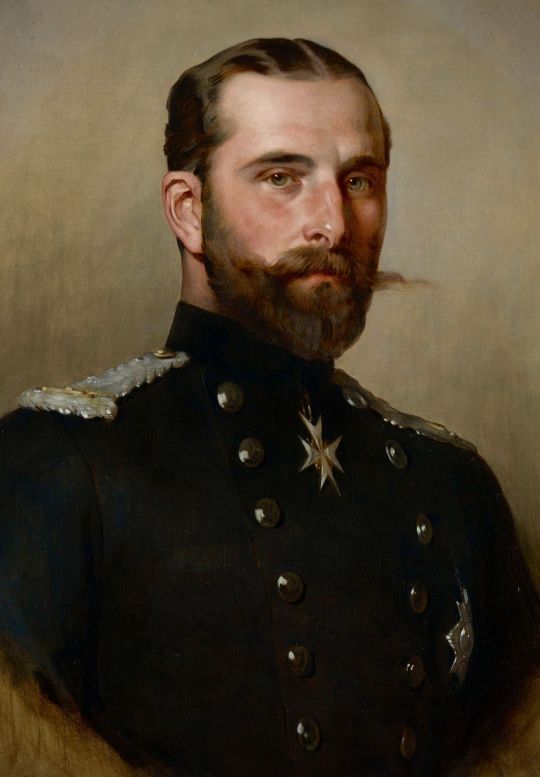
The painting is by Bertha Müller (1848- 1937) but it is a copy after Heinrich von Angeli (1840 – 1925) . The original was in Windsor Castle and was painted in 1896. King Edward VII gave it to the prince and commissioned the copy by Bertha Müller to replace the original.
Prince Henry Maurice of Battenberg (1858–1896)
144 notes
·
View notes
Text
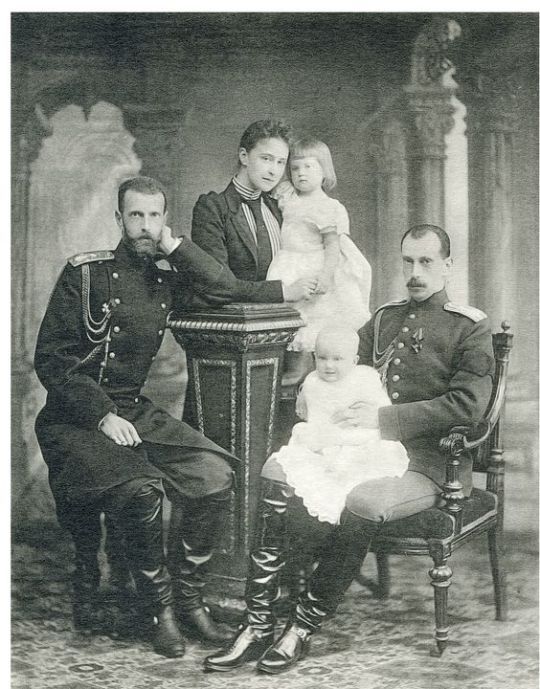
Alexandra's death sent a shock wave through the European Courts. She was so young, and the tragedy so unexpected and so cruel. From Balmoral, Queen Victoria petitioned her granddaughter for the full details, and when no satisfactory answer came she turned to Elisabeth's elder sister: "What brought on the fits? As a usual thing - a wrong state of the kidneys produces these convulsions if not attended to; & the labour must then be brought on (wh. is quite easily done) but the danger is very great." Her heart went out to Pavel's children; Marie was only seventeen months old and Dmitri needed constant nursing for the first few months simply to keep him alive. The Queen hoped that Elisabeth and Sergei would be able to assume responsibility for them both. As the months passed, Elisabeth kept her grandmother in touch with the progress of her widowed brother-in-law and his family. They were all finding it hard to come to terms with what had happened: Pavel needed emotional support from his brother and sister-in-law but their own grief was still strong. Almost a year after the tragedy Elisabeth and Sergei travelled to St Petersburg to share Pavel's name day, and she told the Queen, "it is heart-rending to see him so resigned but so utterly broken down, his little boy was with us until now as we had heavenly weather at Moscow & Ilinskoie…. he is a sweet little fat healthy Baby with a merry character but the real beauty is his sister - I have rarely seen a lovelier child. Poor motherless Darlings, it is too sad…. how happy all were a year ago. .. What a year it has been for us all, wherever one looks sorrow.' Time brought no relief. Another year passed, and Elisabeth wrote, 'Paul comes from time to time to see us - he & the Babies are quite well but his poor aching heart cannot heal although he is in better spirits, yet he never for a moment forgets his sorrow poor, poor fellow." The Queen invited them all to Balmoral and in September 1893 they left Russia with Elisabeth's lady-in-waiting Princess Troubetskoy and the Grand Prince's gentlemen, Count Steinbock and Baron Schilling. The children remained in Russia with their nurses. The visit to Balmoral was a happy interlude that gave the brothers a rare chance to see their cousin Prince Henry of Battenberg, the Queen's son-in-law, who shared their memories of the childhood autumns at Heiligenberg. Pavel had the same birthday as Henry's youngest son Maurice, which was celebrated at Balmoral, and the Queen was careful to see that her Russian guest was not forgotten. While the two-year-old enjoyed his new toys, Pavel was given a posy of flowers, a wrapper (probably in good Scottish tartan and a cigarette case. With his brother and cousin he went hunting and visiting in the neighbourhood (...).
"The Romanovs 1818-1959" - John van der Kiste
#paul alexandrovich#elizabeth feodorovna#romanov#imperial family#russia#russian history#royal history#royalty#sergei alexandrovich#queen victoria#henry of battenberg#dmitri pavlovich#maria pavlovna jr.
10 notes
·
View notes
Text
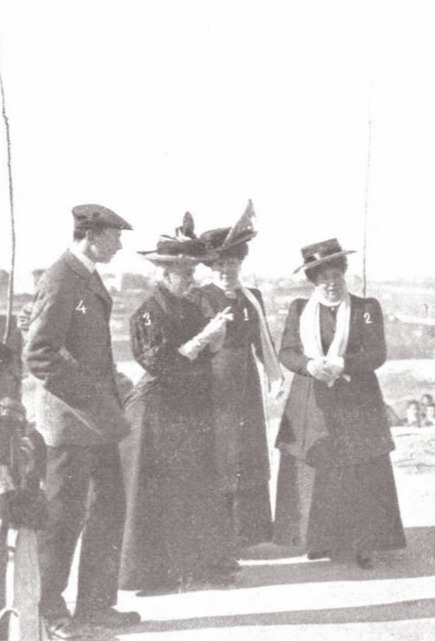
Prince Maurice of Battenberg, Miss Cochrane, Princess Henry of Battenberg and Queen Victoria Eugenie of Spain at a golf camp in Spain, 1911.
#prince maurice of battenberg#princess henry of battenberg#queen victoria eugenia of spain#spanish royal family#battenberg#german royal#german royalty#british royal fandom#british royalty#british princess#british royal family#british royal#hesse#hesse-darmstadt#1911#1910s
15 notes
·
View notes
Photo
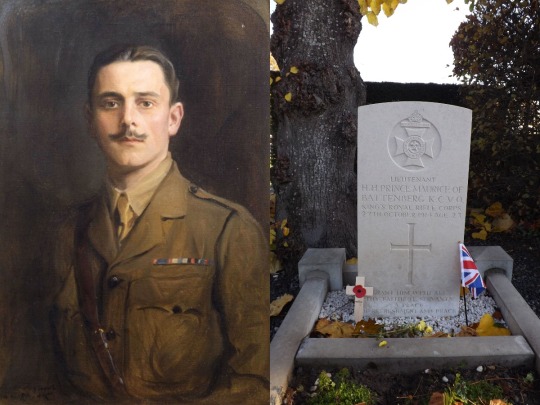
Prince Maurice of Battenberg Prince of Battenberg was born at Balmoral Castle, the fourth and youngest child of Prince Henry of Battenberg and his wife, Princess Beatrice, the youngest child of Queen Victoria. Despite suffering from the family affliction of hemophilia, he volunteered for the King's Royal Rifle Corps and served in France during the First World War. At the First Battle of Ypres in 1914, Prince Maurice was a lieutenant commanding the second division of the battalion. As soon all the troops had crossed, the enemy opened fire from their position on the Keiberg. The Prince was mortally wounded by shrapnel and died on the field before his men could take him to safety. At his mother’s request her was buried with his men in the CWGC cemetery, in the same style as all other soldiers. He was 23 years old.
#WW1#world war one#the great war#The First World War#history#historical photos#chinese history#Scottish history#military history#war history#1919#1918#1916#1915#The wars#wwi#Cemetery#ypres#ieper#grave#CWGC
50 notes
·
View notes
Text

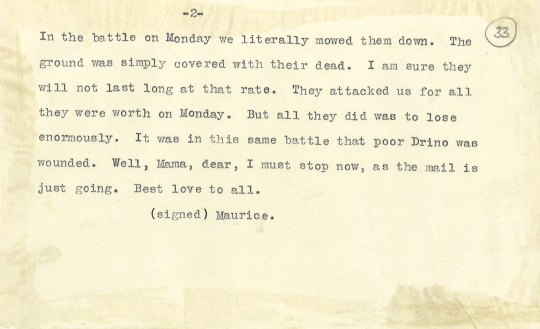

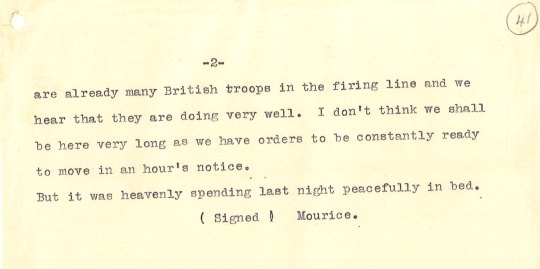
Letters of Prince Maurice of Battenberg to his mother Princess Beatrice of the United Kingdom, later Princess Henry of Battenberg
He died 9 days after the 2nd letter was written, 27 October 1914. The Prince served in World War I as a Lieutenant in the King's Royal Rifle Corps, and was killed in action at Zonnebeke, in the Ypres Salient. He was a member of the Hessian princely Battenberg family and the extended British Royal Family, and the youngest grandchild of Queen Victoria.
#i actually cried reading the letters#i got really emotional#prince maurice of battenberg#royal letters
18 notes
·
View notes
Text
Victoria I (Queen of UK of Great Britain and Ireland) (24 May 1819 – 22 January 1901)
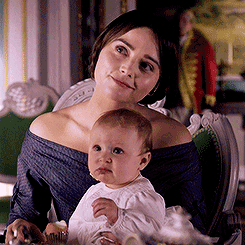
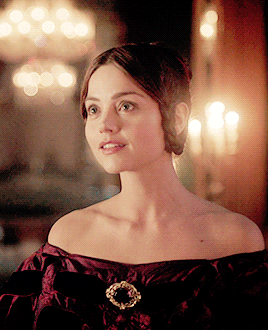


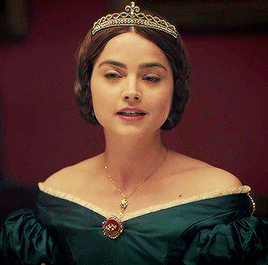
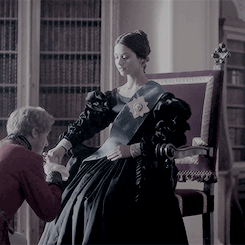

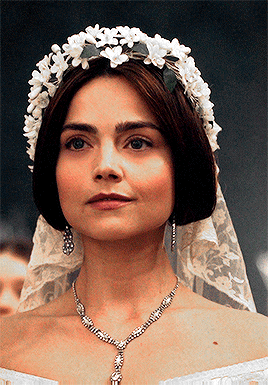


Daughter of Prince Edward (Duke of Kent and Strathearn) and Princess Victoria of Saxe-Coburg-Saalfeld.
Wife of Prince Albert of Saxe-Coburg and Gotha
Mother of Victoria (Princess Royal), Edward VII, Princess Alice, Prince Alfed (Duke of Saxe-Coburg and Gotha), Princess Louise, Princess Helena, Prince Arthur (Duke of Connaught and Strathearn), Prince Leopold (Duke of Albany), and Princess Beatrice.
Grandmother of Wilhelmina II (King of Germany and Prussia), Princess Charlotte of Prussia, Prince Henry of Prussia, Prince Sigismund of Prussia, Princess Viktoria of Prussia, Prince Waldemar of Prussia, Princess Sophia of Prussia, Princess Margaret of Prussia, Prince Albert Victor (Duke of Clarence and Avondale), George V, Louise (Princess Royal), Princess Victoria, Princess Maud of Wales, Prince Alexander John of Wales, Princess Victoria of Hesse and by Rhine, Elizabeth Feodorovna (Grand Duchess of Russia), Princess Henry of Prussia, Ernest Louis (Grand Duke of Hesse), Prince Friedrich of Hesse and by Rhine), Alexandra Feodorovna (Empress of Russia), Princess Marie of Hesse and by Rhine, Alfred (Hereditary Prince of Saxe-Coburg and Gotha), Marie of Romania, Victoria Feodorovna (Grand Duchess of Russia) Princess Alexandra of Saxe-Coburg and Gotha (Princess Consort of Hohenlohe-Langenburg), Princess Beatrice of Saxe-Coburg and Gotha (Duchess of Galliera), Prince Christian Victor of Schleswig-Holstein, Albert (Duke of Schleswig-Holstein), Princess Helena Victoria of Schleswig-Holstein, Princess Marie Louise of Schleswig-Holstein (Princess Aribert of Anhalt), Prince Harald, Princess Margaret of Connaught (Crown Princess of Sweden), Prince Arthur of Connaught, Princess Patricia of Connaught (Lady Patricia Ramsay), Princess Alice (Countess of Athlone), Charles Edward (Duke of Saxe-Coburg and Gotha), Alexander Mountbatten (1st Marquess of Carisbrooke), Victoria Eugenie of Battenberg (Queen of Spain), Lord Leopold Mountbatten, and Prince Maurice of Battenberg
Mother-in-law of Fredrick III (Emperor of Germany), Princess Alexandra of Denmark, Louis IV (Grand Duke of Hesse and by Rhine), Grand Duchess Maria Alexandrovna of Russia, Prince Christian of Schleswig-Holstein, John Campbell (9th Duke of Argyll), Princess Louise Margaret of Prussia, Princess Helena of Waldeck and Pyrmont, and Prince Henry of Battenberg.
20 notes
·
View notes
Text

Outside at Balmoral, from left to right: Princess Helena Victoria of Schleswig-Holstein; Marie, Princess Leiningen; Princess Victoria of Wales; Queen Victoria, seated; Irene, Princess Henry of Prussia; Prince Waldemar; Prince Sigismund in pram; Prince Maurice of Battenberg, June 1898.
#irene of hesse#irene of hesse and by rhine#louis iv#princess alice#princess alice of the united kingdom#queen victoria#victoria#prince albert#albert#victorian#victorian era#princess helena victoria#princess victoria of wales#germany#hesse#rhine#england#united kingdom#wales#schleswig holstein#prussia#princess#history#royal#royalty
40 notes
·
View notes
Photo

On This Day In History . 23 Jul 1885 . Princess Beatrice married Prince Henry of Battenberg . . The couple had four children; . ◼ Alexander Mountbatten, 1st Marquess of Carisbrooke, (born Prince Alexander of Battenberg; 23 November 1886 – 23 February 1960). He was a Prince of Battenberg from his birth until 1917, when the British Royal Family relinquished their German titles during the First World War & he was created Marquess of Carisbrooke by King George V. . ◼ Victoria Eugenie of Battenberg (b.24 October 1887 – d.15 April 1969) was later Queen consort of Spain as the wife of King Alfonso XIII. . ◼ Lord Leopold Mountbatten, (b. 21 May 1889 – d.23 April 1922). Leopold was a haemophiliac, a condition he inherited from his mother, & died during a knee operation. . ◼ Prince Maurice of Battenberg, (b.3 October 1891 – d.27 October 1914), The young Prince served in World War I as a lieutenant in the King's Royal Rifle Corps, & was killed in service in the Ypres Salient in 1914. He is buried in Ypres Town Commonwealth War Graves Commission Cemetery. . . . #onthisdayinhistory #thisdayinhistory #theyear1885 #d23jul #PrincessBeatrice #Princess #HouseofSaxeCoburgandGotha #PrinceHenryofBattenberg #History #royalfamily #royalwedding #Britishmonarchy #heritage #Royalhistory #britishroyalty #BritishRoyals #RoyalWeddings #QueenVictoria #Historic #instahistory #Brideandgroom #VintagePhotography #vintage #Vintagephoto #WeddingDress #Wedding #bride . 📷 Royal Collection Trust/© Her Majesty Queen Elizabeth II 2018 (at St Mildred's Church, Whippingham) https://www.instagram.com/p/B0QptEsA7Ba/?igshid=1woizoq8zlzc5
#onthisdayinhistory#thisdayinhistory#theyear1885#d23jul#princessbeatrice#princess#houseofsaxecoburgandgotha#princehenryofbattenberg#history#royalfamily#royalwedding#britishmonarchy#heritage#royalhistory#britishroyalty#britishroyals#royalweddings#queenvictoria#historic#instahistory#brideandgroom#vintagephotography#vintage#vintagephoto#weddingdress#wedding#bride
3 notes
·
View notes
Photo

Her Royal Highness Princess Henry of Battenberg, née HRH The Princess Beatrice with her sons, Prince Maurice of Battenberg, Prince Leopold of Battenberg and Prince Alexander of Battenberg at the coronation, 1911
51 notes
·
View notes
Text
Harry, Duke of Sussex – Wikipedia
Harry, Duke of Sussex – Wikipedia
HRH Prince Henry Charles Albert David, Duke of Sussex, Earl of Dumbarton and Baron Kilkeel, KCVO (* 15. September 1984 in London; genannt Prince Harry, deutsch Prinz Harry, Herzog von Sussex), ist der zweite Sohn von Prinz Charles und Prinzessin Diana. Er steht nach seinem Vater und seinem älteren Bruder Prinz William sowie dessen Kindern Prinz George, Prinzessin Charlotte und Prinz Louis an sechster Stelle der britischen Thronfolge. Er ist ein Enkel von Königin Elisabeth II. und deren Gemahl Prinz Philip und entstammt damit auch dem Haus Schleswig-Holstein-Sonderburg-Glücksburg, einer Nebenlinie des Hauses Oldenburg.
Leben Kindheit und Jugend Prinz Harry wurde im Londoner St. Mary’s Hospital, Paddington geboren. Er besuchte wie sein zwei Jahre älterer Bruder William die Mrs. Jane Mynor’s Nursery School in West London, die Wetherby School, die Ludgrove School in Berkshire und das Eton College, ebenfalls in Berkshire. Im Juni 2003 machte er seinen Schulabschluss (A-Level, entspricht dem deutschen Abitur) in Kunst und Geographie. Er wurde schon in seiner Jugend von Paparazzi verfolgt; Magazine der Regenbogenpresse und Boulevardzeitungen berichteten ausführlich über Harrys Partybesuche, Flirts und Kneipentouren (in Großbritannien ist „underage drinking“ verboten, aber verbreitet). Im Alter von 17 gab Harry zu, Cannabis geraucht zu haben.[1] Im Januar 2005 war er auf einem Kostümfest in einem Kostüm mit Hakenkreuz-Armbinde zu sehen,[2] das eine Uniform von Erwin Rommels Afrikakorps darstellen sollte.
Militärische Laufbahn Von Mai 2005 bis April 2007 erhielt er an der Royal Military Academy Sandhurst eine Offiziersausbildung. Im April 2006 wurde er in Anwesenheit seiner Großmutter Königin Elisabeth II. vereidigt und Mitglied des Gardekavallerieregiments Blues and Royals. Im Mai 2007 sollte er mit dem Regiment im Irak eingesetzt werden. Seine Vorgesetzten entschieden jedoch, dass sowohl er als auch seine Kameraden dadurch einer übermäßigen Gefährdung ausgesetzt wären, da irakische Untergrundorganisationen mit Anschlägen gedroht hatten. Von Mitte Dezember 2007 bis Ende Februar 2008 war Prinz Harry im Rahmen des ISAF-Einsatzes in der Provinz Helmand im Süden Afghanistans stationiert und nahm dort wie andere Offiziere an Fronteinsätzen teil.[3] Dieser Umstand war zunächst nur wenigen Journalisten bekannt; nach öffentlichem Bekanntwerden wurde er wegen Sicherheitsbedenken am 29. Februar 2008 vorzeitig aus Afghanistan abgezogen.[4] Prinz Harry in London, 2013 Ab Januar 2009 absolvierte Harry eine Ausbildung zum Hubschrauberpilot bei der britischen Luftwaffe[5] und schloss diese im Mai 2010 erfolgreich ab. Daraufhin wurde er zum Colonel-in-Chief bei den Heeresfliegern ernannt und ihm wurden die „provisional wings“ durch seinen Vater verliehen. Von Juli 2010 bis Februar 2011 setzte er seine Pilotenausbildung mit dem Kampfhubschrauber Apache fort.[6] Am 14. April 2011 wurde er zum Captain befördert.[7]Prinz Harry nahm im Dezember 2013 – gemeinsam mit verwundeten Soldaten – an einem 335 Kilometer langen Marsch zum Südpol, zu Gunsten der Hilfsorganisation „Walking With The Wounded“, teil. Am 13. Dezember 2013 erreichte die Gruppe den Südpol.[8] 2014 wurde er zurück nach London versetzt, wo er anschließend administrative Aufgaben der British Army wahrnahm. Zu seinem Aufgabenfeld gehörte unter anderem die Koordination von Projekten und Zeremonien in London, bei denen die Garderegimenter der Household Division involviert waren. Im Juni 2015 wurde mitgeteilt, dass Prinz Harry nach mehr als zehn Jahren aus der Armee ausgeschieden ist.[9]Er übernahm, wie viele Mitglieder des britischen Königshauses, die Rolle eines Ehrenobersten bei einem der Garderegimente. In seinem Fall waren es die Life Guards, die das zweite Gardekavallerieregiment sind und zusammen mit Harrys ehemaligem Regiment, den Blues and Royals, die Household Cavalry bilden.[10] Im Dezember 2017 wurde er in der Nachfolge seines Großvaters, des Duke of Edinburgh, zum Captain General der Royal Marines ernannt.[11] Privates Prinz Harry und Meghan Markle, 2017 Prinz Harry war von 2004 bis 2010 (mit einer Unterbrechung im Jahr 2009) mit Chelsy Davy (* 1985) liiert. Am 8. November 2016 ließ Prinz Harry über sein Pressesekretariat eine Verlautbarung herausgeben, worin Meghan Markle (* 1981) als dessen neue Freundin bezeichnet wurde. Am 27. November 2017 wurde die Verlobung des Paares öffentlich bekanntgemacht, die Hochzeit fand am 19. Mai 2018 auf Windsor Castle statt.[12][13] Offizielle Aufgaben
Harry ist Prinz von Großbritannien und Nordirland. Nach britischer Nomenklatur führte er bis zu seiner Hochzeit den Höflichkeitstitel „Prince Henry of Wales“, wobei sich „Prince“ auf Großbritannien und nicht auf Wales bezieht. Der Titel „The Prince of Wales“, zu deutsch „Fürst von Wales“, ist dem jeweiligen Thronfolger vorbehalten, also seinem Vater. Kurz vor seiner Hochzeit mit Meghan Markle verlieh ihm die Queen die Titel Duke of Sussex, Earl of Dumbarton und Baron Kilkeel.[14]Im April 2006 gründete Harry zusammen mit Prinz Seeiso von Lesotho eine Wohltätigkeitsstiftung, welche sich um HIV-/AIDS-Waisen kümmert.[15] Die Stiftung wurde „Sentebale“ getauft, was so viel wie „Vergiss mich nicht“ bedeutet. Der Name bezieht sich auf seine verstorbene Mutter Prinzessin Diana. Er will das Engagement seiner Mutter für Aids-Waisen fortführen[16] und sich generell stark für wohltätige Zwecke einsetzen.[17]Gemeinsam mit seinem Bruder William organisierte Harry am 1. Juli 2007 ein Gedenkkonzert und zum 10. Todestag am 31. August 2007 einen Gedenkgottesdienst für Prinzessin Diana.[18] Bei Letzterem hielt er eine sehr persönliche Rede, die in der Öffentlichkeit und in den Medien als überaus positiv aufgenommen wurde.[19] Er ist außerdem Patron der Invictus Games, die er 2014 ins Leben gerufen hat. Bei dieser Veranstaltung treten verwundete Soldaten in sportlichen Wettkämpfen gegeneinander an.
Orden und Ehrenabzeichen
Vorfahren Ahnentafel Prince Harry, Duke of Sussex Ururgroßeltern
König Georg I. (Griechenland) (1845–1913)∞ 1867Olga Romanowa (1851–1926)
Louis Mountbatten, 1. Marquess of Milford Haven (1854–1921)∞ 1884Prinzessin Viktoria von Hessen-Darmstadt (1863–1950)
König Georg V. (1865–1936)∞ 1893Maria von Teck (1867–1953)
Claude Bowes-Lyon, 14. Earl of Strathmore and Kinghorne (1855–1944)∞ 1887Cecilia Nina Cavendish-Bentinck (1862–1938)
Charles Spencer, 6. Earl Spencer (1857–1922)∞ 1887The Honourable Margaret Baring
James Hamilton, 3. Duke of Abercorn (1869–1953)∞ 1894Lady Rosalind Bingham (1869–1958)
James Roche, 3. Baron Fermoy (1852–1920)∞ 1880Frances Work (1857–1947)
William Smith Gill (1865–1957)∞ 1898Ruth Littlejohn (1879–1964)
Urgroßeltern
PrinzAndreas von Griechenland (1882–1944)∞ 1903Prinzessin Alice von Battenberg (1885–1969)
König Georg VI. (1895–1952)∞ 1923Elizabeth Bowes-Lyon (1900–2002)
Albert Spencer, 7. Earl Spencer (1892–1975)∞ 1919Lady Cynthia Hamilton (1897–1972)
Maurice Roche, 4. Baron Fermoy (1885–1955)∞ 1931Ruth Gill (1908–1993) Großeltern
Prinz Philip von Griechenland und Dänemark (* 1921)∞ 1947Königin Elisabeth II. (* 1926)
Edward Spencer, 8. Earl Spencer (1924–1992)∞ 1954–1969The Honourable Frances Roche (1936–2004)
Eltern
Charles, Prince of Wales (* 1948)∞ 1981–1996Lady Diana Spencer (1961–1997)
Prince Harry, Duke of Sussex (* 1984)
Literatur Weblinks
Einzelnachweise ↑ Harry und die Plastikwelt. In: Der Spiegel. Nr. 17, 22. April 2013 (spiegel.de [abgerufen am 27. November 2017]).
↑ Harry says sorry for Nazi costume. In: BBC.co.uk. 13. Januar 2005, abgerufen am 27. November 2017.
↑ Prinz Harry als Soldat in Afghanistan. In: Spiegel Online. 28. Februar 2008, abgerufen am 2. Dezember 2014.
↑ Meldung über den Abzug Prinz Harrys (Memento vom 13. Juni 2009 im Internet Archive) auf der Website des britischen Verteidigungsministeriums
↑ Harry wird Hubschrauberpilot (Memento vom 2. Mai 2011 im Internet Archive), AFP
↑ Prince Harry receives his provisional wings from his father The Prince of Wales. In: princeofwales.gov.uk, 7. Mai 2010
↑ Prince Harry promoted to Captain and completes first stage of Apache training. In: princeofwales.gov.uk, 17. April 2011
↑ Welcome Home Press Conference. Walking With The Wounded, 21. Januar 2014
↑ Prince of Wales leaves Army. In: princeofwales.gov.uk (englisch).
↑ Prince Harry ‘to become Colonel of the Life Guards’ after leaving Army. In: royalcentral.co.uk (englisch).
↑ Queen appoints Prince Harry to take over from his grandfather Philip as the Captain General of the Royal Marines In: dailymail.co.uk (englisch).
↑ Hochzeit im Frühjahr: Prinz Harry hat sich mit Meghan Markle verlobt. In: Spiegel Online. 27. November 2017 (spiegel.de [abgerufen am 27. November 2017]).
↑ Prince Harry and Meghan Markle are planning their own ‘fun’ wedding at Windsor Castle in May 2018 auf: Business Insider vom 28. November 2017
↑ Prince Harry and Ms. Meghan Markle announcement titles. 19. Mai 2018, abgerufen am 19. Mai 2018.
↑ princeofwales.gov.uk
↑ Prinz Harry eifert seiner Mutter nach. In: Spiegel Online. 28. April 2016, abgerufen am 2. Dezember 2014.
↑ princeofwales.gov.uk
↑ Patricia Dreyer: Geeinte Trauerfront des Hochadels. In: Spiegel Online. 31. August 2007, abgerufen am 2. Dezember 2014.
↑ Prinz Harry: „Diana war die beste Mutter der Welt“. In: Focus Online. 31. August 2007, abgerufen am 2. Dezember 2014.
Source link
0 notes
Text
Following are quotes from https://en.wikipedia.org/wiki/Tyrian_purple
“Royal purple redirects here. For other uses, see Royal Purple (disambiguation).
Tyrian purple (Greek, πορφύρα, porphyra, Latin: purpura), also known as Tyrian red, ROYAL PURPLE, imperial purple or imperial dye, is a bromine-containing reddish-purplenatural dye. It is a secretion produced by several species of predatory sea snails in the family Muricidae, rock snails originally known by the name Murex. In ancient times, extracting this dye involved tens of thousands of snails and substantial labor, and as a result, the dye was highly valued.
https://en.wikipedia.org/wiki/Tyre,_Lebanon
Lilith, Owls, Tyre, The Stone of Destiny & Queen Elizabeth https://spidercatweb.blog/2017/03/19/lilith/
Queen Elizabeth, The Daughter of TYRE?? https://spidercatweb.blog/2016/01/27/queen-elizabeth-the-daughter-of-tyre/
ROYAL HAEMOPILIACS
Frederick of Hesse
Waldemar of Prussia
Henry of Prussia
Rupert Alexander George of Teck, Viscount Trematon
Alexi Tsarevitch
Prince Leopold
Leopold Mountbatten
Maurice, Prince of Battenberg
Alfonso, Prince of the Asturias
Infante Gonzalo of Spain
ROYALS & PORPHYRIA
A STRONG stomach is needed if you are going to look at some IMAGES OF PEOPLE WITH PORPHYRIA
King George III
Mary, Queen of Scots
James V of Scotland
James I and VI
Princess Charlotte Augusta of Wales
Prince William of Gloucester, who died in a plane crash in 1972. He was the eldest son of Prince Henry, Duke of Gloucester (son of George V). diagnosed with porphyria. Don’t know type or extent of his symptoms.
Grandson of George V; for the grandson of George II who was also known as Prince William of Gloucester, see Prince William Henry, Duke of Gloucester and Edinburgh for the son of Anne, Queen of Great Britain see Prince William, Duke of Gloucester
According to http://www.sussex.ac.uk/press_office…/article1.html “There is a one-in-two chance of any member of the Royal family with the faulty gene passing it on to each offspring. Of that number, around 10% will suffer symptoms.”
Spanish Habsburg line
Princess Charlotte of Prussia
Princess Feodora of Saxe-Meiningen
Maria I of Portugal
Vlad III
King Nebuchadnezzar of Babylon
Daniel 4, the madness of Nebuchadnezzar (4th chapter of the Bible‘s Book of Daniel) tells how King Nebuchadnezzar learns the lesson of God’s sovereignty, “who is able to bring low those who walk in pride.” Nebuchadnezzar dreams of a great tree that shelters the whole world, but in his dream an angelic “watcher” appears and decrees that the tree must be cut down and that for seven years he, Nebuchadnezzar, will have his human mind taken away and will eat grass like an ox. This comes to pass, and at the end of his punishment Nebuchadnezzar praises God. (Daniel‘s role is to interpret the dream for the king).[1]
The message of Nebuchadnezzar’s madness is that all earthly power, including that of kings, is subordinate to the power of God.[2] It forms a contrasting pair with chapter 5: Nebuchadnezzar learns that God alone controls the world and is restored to his kingdom, while Belshazzar fails to learn from Nebuchadnezzar’s example and has his kingdom taken from him and given to the Medes and Persians.[3] wiki
Nebuchadnezzar & porphoria
“Aside from boanthropy, other explanations for his behaviour include porphyria (a group of enzyme disorders that manifest with neurological symptoms including hallucinations, depression, anxiety and paranoia) or general paresis or paralytic dementia caused by syphilis.
The porphyrias are a group of rare inherited or acquired disorders of certain enzymes that normally participate in the production of porphyrins and haem. They manifest with either neurological complications or skin problems, or occasionally both.
The metamorphosis of humans into animals is known as therianthropy, the best known form of which is lycanthropy — transformation into a wolf or werewolf. The term “cynanthropy” dates back to ancient Greece and is applied to shapeshifters who alternate between human and dog form. A therianthrope, however, is a being that is part human, part animal. http://www.pharmaceutical-journal.com/opinion/blogs/nebuchadnezzar-and-boanthropy/11123165.blog
youtube
The European royal lines have always been prone to the odd loss-of-function mutation. An unlucky mutation in Queen Victoria’s Factor IX gene caused a nasty case X-linked Haemophilia B in her male descendants (a mutation that was only mapped in 2009 by sequencing the bones of the murdered Romanov branch).
More systemic genetic problems have been the result of heavy inbreeding; Charles II of Spain, with his distressingly bushy family tree (left), suffered from severe Habsburg jaw, along with a host of other genetic complaints. http://genomesunzipped.org/2011/04/inbreeding-genetic-disease-and-the-royal-wedding.php
http://mobile.abc.net.au/news/2004-12-18/gollums-precious-little-regard-for-his-health/605648 http://archive.is/u5rNK
PRINCE CHARLES RELATED TO DRACULA http://www.express.co.uk/news/royal/786300/Prince-Charles-Romania-royal-tour-Bucharest-Dracula
http://www.englishmonarchs.co.uk/scottish_kings.htm
https://en.wikipedia.org/wiki/Porphyria
https://en.wikipedia.org/wiki/Shades_of_purple#Royal_purple:_17th_century
https://en.wikipedia.org/wiki/Shades_of_purple#Tyrian_purple:_Classical_antiquity
https://en.wikipedia.org/wiki/Tyrian_purple
BLUE BLOOD
Royal blue “The Phoenicians also made an indigo dye, sometimes referred to as royal blue or hyacinth purple, which was made from a closely related species of marine snail.[18]“
“The colour-fast (non-fading) dye was an item of luxury trade, prized by Romans, who used it to colour ceremonial robes.”
Hemolymph, or haemolymph, is a fluid, analogous to the blood in vertebrates, that circulates in the interior of the arthropod body remaining in direct contact with the animal’s tissues. It is composed of a fluid plasma in which hemolymph cells called hemocytes are suspended. In addition to hemocytes, the plasma also contains many chemicals. It is the major tissue type of the open circulatory system characteristic of arthropods (e.g. arachnids, crustaceans and insects).[1][2] In addition, some non-arthropods such as molluscs possess a hemolymphatic circulatory system. https://en.wikipedia.org/wiki/Hemolymph
Nobility https://en.wikipedia.org/wiki/Nobility
Rhesus Factor – RH Negative https://en.wikipedia.org/wiki/Rh_blood_group_system
Blue Baby https://en.wikipedia.org/wiki/Hemolytic_disease_of_the_newborn
The Rh factor was discovered by Landsteiner and Alexander Wiener in 1940 Before the prophylactic use of Rh immunoglobulins (anti-D globulin) was introduced, maternal anti-D antibodies frequently caused fetal brain damage, as a result of the increased levels of bilirubin (Kern icterus), and death. The mechanism underlying the prevention of maternal anti-D production after receipt of prophylactic Rh immunoglobulin could be due to antigen blocking or a central inhibition of the immune response. Prophylactic Rh immunoglobulins are usually given by intramuscular injection. Rh immunoglobulins are also used for treating idiopathic thrombocytopenia, when they are given intravenously. The primary mechanism of action for this indication is believed to be an immunological blockade of Fc receptors within the reticuloendothelial system, preventing entrapment of antibody-coated platelets with a subsequent rise in the circulating platelet count (Ware & Zimmerman, 1998). Today’s methods for obtaining Rh immunoglobulin for a therapeutic hyperimmunoglobulin preparation follow Wiener’s original 1943 procedures for obtaining anti-Rh antibodies for diagnostic purposes. In his search, Wiener found the most convenient source of anti-Rh sera were people already sensitized by pregnancy or transfusion. During World War II, Wiener prepared anti-Rh serum for the armed forces by injecting small Rh-positive red cells into people who were already sensitized and could induce a very strong anamnestic response. The best source of anti-Rh serum came from male Rh-negative volunteers immunized with a small dose of Rh-positive red cells. At least two injections, 4 months apart, for the production of specific high-titre anti-Rh antibodies were required (Wiener 1969) http://onlinelibrary.wiley.com/doi/10.1046/j.1365-2141.2003.04295.x/full#ss4. http://onlinelibrary.wiley.com/doi/10.1046/j.1365-2141.2003.04295.x/full https://archive.is/avONc
The Basque people of Spain have an unusually high percentage of Rh Negative blood, DNA tests have confirmed a link between the Irish and the Basques, Ireland and Scotland also have a high percentage of people with Rh negative blood,
The Rhesus Factor and Disease Prevention https://qmro.qmul.ac.uk/xmlui/bitstream/handle/123456789/2748/TANSEYRhesusFactor2004FINAL.pdf?sequence=2
Purple, Prince, Riddled Royals & Chemtrails https://spidercatweb.blog/2016/04/21/prince-dead/
This slideshow requires JavaScript.
According to this webpage archive the following supposedly all have RH negative blood- Liam & Noel Gallgher, Ozzy Osbourne, Fidel Castro, Kurt Cobaine, Janis Joplin, Marilyn Monroe
The following is according to their facebook page
Mar. 18, 1985 The regal donor of the precious stuff was Prince Charles, 36, who has become the first member of the royal family ever to give blood, in his case, O Rh-negative. http://content.time.com/time/magazine/article/0,9171,963393,00.html https://archive.is/zV5Pa
Genes on the Y Chromosome
Every human has 23 pairs of chromosomes – organized packets of genetic information (DNA) which code for all the necessary amino acids to create a human being. The twenty-third set of chromosomes determine the gender of a person: two X chromosomes create a female, and an X paired with a Y creates a male.
The Y chromosome is much smaller than a typical X chromosome, and contains somewhere between 70-200 genes (the entire human genome comprises approximately 20,000-25,000 genes). Some important genes on the Y chromosome include:
SRY: The SRY (Sex Determining Y Region) gene determines gender. This gene will bind to other DNA in the cell, distorting it out of shape. This single gene creates the male phenotype. In a very rare genetic event, the gene sometimes gets translocated onto an X chromosome. When this happens, the child carries a genome that should be female (46, XX), but develops as a male. Adult men with a 46, XX karyotype and a translocated SRY gene are often identified due to infertility or hypogonadism (underdeveloped testes).
SHOX: The SHOX gene (Short Stature Homeobox) is located on the X and the Y chromosome. This gene is responsible for skeletal growth. While many genes are located only on the X chromosome, this gene is present in both the X and the Y chromosome, so that each gender receives two functional copies of the gene.
USP9Y: This gene (ubiquitin specific peptidase 9, Y-linked) is found on the Y chromosome, and is only present in males. This gene is involved in the production of healthy sperm, and infertile males sometimes have a mutation in this gene.
The Y chromosome is not necessary for the male phenotype. The SRY gene is required, however, and it is almost always located on the Y chromosome. In a few rare cases, the SRY gene has been translocated (moved) to the X chromosome by accident. In these cases, the genotype is 46, XX – this would normally indicate a female genotype. In the rare case of translocation of the SRY gene, however, a man can be 46, XX: these men are often fully masculinized, but are infertile. This is sometimes called the “XX Male Syndrome.”
There are also reports of men who have a 46, XX genotype without the SRY gene. The causes of this rare occurrence have not been completely investigated. Like the men with the translocated SRY gene, these men are infertile.
Facts of Life — Gender Determination
Y Chromosome Disorders Klinefelter Syndrome XYY Syndrome Turner Syndrome
Irish and British DNA : a comparison
British and Irish DNA suggests that people on the two islands have much genetically in common. Males in both islands have a strong predominance of Haplogroup 1 gene, meaning that most of us in the British Isles are descended from the same Spanish stone age settlers.
The main difference is the degree to which later migrations of people to the islands affected the population’s DNA. Parts of Ireland (most notably the western seaboard) have been almost untouched by outside genetic influence since hunter-gatherer times. Men there with traditional Irish surnames have the highest incidence of the Haplogroup 1 gene – over 99%.
At the same time London, for example, has been a mutli-ethnic city for hundreds of years. Furthermore, England has seen more arrivals of new people from Europe – Anglo-Saxons and Normans – than Ireland.
Therefore while the earliest English ancestors were very similar in DNA and culture to the tribes of Ireland, later arrivals to England have created more diversity between the two groups.
Irish and Scottish people share very similar DNA. The obvious similarities of culture, pale skin, tendancy to red hair have historically been prescribed to the two people’s sharing a common celtic ancestry. Actually it now seems much more likely that the similarity results from the movement of people from the north of Ireland into Scotland in the centuries 400 – 800 AD. At this time the kingdom of Dalriada, based near Ballymoney in County Antrim extended far into Scotland. The Irish invaders brought Gaelic language and culture, and they also brought their genes.
Irish Characteristics and DNA The MC1R gene has been identified by researchers as the gene responsible for red hair as well as the accompanying fair skin and tendency towards freckles. According to recent research, genes for red hair first appeared in human beings about 40,000 to 50,000 years ago.
These genes were then brought to the British Isles by the original settlers, men and women who would have been relatively tall, with little body fat, athletic, fair-skinned and who would have had red hair. So red-heads may well be descended from the earliest ancestors of the Irish and British.
A spoof (and very funny) exploration into the characteristics of all Irish-blooded males can be read at this link: www.irishtimes.com/newspaper/weekend. Identified genes include IMG or the Irish Mother Gene and the GK (MF) S Gene Kelly-Michael-Flately-Syndrome which explains the inability of the Irish man to move his hips while dancing!
Irish origin myths confirmed by modern scientific evidence One of the oldest texts composed in Ireland is the Leabhar Gabhla, the Book of Invasions. It tells a semi-mythical history of the waves of people who settled in Ireland in earliest time. It says the first settlers to arrive in Ireland were a small dark race called the Fir Bolg, followed by a magical super-race called the Tuatha de Danaan (the people of the goddess Dana).
Most interestingly, the book says that the group which then came to Ireland and fully established itself as rulers of the island were the Milesians – the sons of Mil, the soldier from Spain. Modern DNA research has actually confirmed that the Irish are close genetic relatives of the people of northern Spain.
While it might seem strange that Ireland was populated from Spain rather than Britain or France, it is worth remembering that in ancient times the sea was one of the fastest and easiest ways to travel. When the land was covered in thick forest, coastal settlements were common and people travlleled around the seaboard of Europe quite freely.
Medieval map of Ireland, showing Irish tribes.
But where did the early Irish come from? For a long time the myth of Irish history has been that the Irish are Celts. Many people still refer to Irish, Scottish and Welsh as Celtic culture – and the assumtion has been that they were Celts who migrated from central Europe around 500BCE. Keltoi was the name given by the Ancient Greeks to a ‘barbaric’ (in their eyes) people who lived to the north of them in central Europe. While early Irish art shows some similarities of style to central European art of the Keltoi, historians have also recognised many significant differences between the two cultures.
The latest research into Irish DNA has confirmed that the early inhabitants of Ireland were not directly descended from the Keltoi of central Europe. In fact the closest genetic relatives of the Irish in Europe are to be found in the north of Spain in the region known as the Basque Country. These same ancestors are shared to an extent with the people of Britain – especially the Scottish.
DNA testing through the male Y chromosome has shown that Irish males have the highest incidence of the haplogroup 1 gene in Europe. While other parts of Europe have integrated contiuous waves of new settlers from Asia, Ireland’s remote geographical position has meant that the Irish gene-pool has been less susceptible to change. The same genes have been passed down from parents to children for thousands of years.
This is mirrored in genetic studies which have compared DNA analysis with Irish surnames. Many surnames in Irish are Gaelic surnames, suggesting that the holder of the surname is a descendant of people who lived in Ireland long before the English conquests of the Middle Ages. Men with Gaelic surnames, showed the highest incidences of Haplogroup 1 (or Rb1) gene. This means that those Irish whose ancestors pre-date English conquest of the island are direct descendants of early stone age settlers who migrated from Spain.
https://owlcation.com/stem/The-Y-Chromosome-Ancestry-Genetics-and-the-Making-of-a-Man https://archive.is/dp1Cm
http://www.sott.net/article/263587-DNA-shows-Irish-people-have-more-complex-origins-than-previously-thought https://archive.is/Cc74k
http://stevenmcollins.com/WordPress/dna-of-pharaohs-and-europeans-trace-an-israelite-ancestry/ https://archive.is/FfonD
KING TUT’S DNA ~ WESTERN EUROPEAN
Haplogroups are assigned letters of the alphabet, and refinements consist of additional number and letter combinations, for example R1b or R1b1. Y-chromosome and mitochondrial DNA haplogroups have different haplogroup designations. In essence, haplogroups give an inisight into ancestral origins dating back thousands of years.
By entering all the STR data inadvertently shown on the Discovery video, a 99.6 percent fit with the R1b haplogroup is revealed.
The significance is, of course, that R1b is the most common Y-chromosome haplogroup in Europe reaching its highest concentrations in Ireland, Scotland, western England and the European Atlantic seaboard — in other words, European through and through. http://www.eutimes.net/2010/06/king-tuts-dna-is-western-european/ https://archive.is/yX4Ex
We’ve got the same mummy! Up to 70% of British men are ‘related’ to the Egyptian Pharaoh Tutankhamun http://www.dailymail.co.uk/sciencetech/article-2022313/Up-70-British-men-related-Egyptian-Pharaoh-Tutankhamun.html https://archive.is/kborD
MORE BRITISH ROYAL FAMILY
God Damn Numbers: Scotland & the number 22 https://spidercatweb.blog/2015/12/28/god-damn-numbers/
Paedos Satanism & Murder https://spidercatweb.blog/2015/12/24/satanic-paedophile-practices-of-british-royal-family/
Satanic Paedo Royals https://spidercatweb.blog/2017/05/06/satanic-paedo-royal/
Satanic royals https://spidercatweb.blog/2017/04/03/satanic-royals/
CHATEAU DES AMEROIS ROYAL SATANIC RITUALS, DUTROUX & PAEDO https://spidercatweb.blog/2016/02/29/bastards/
JOINING DOTS https://spidercatweb.blog/2016/08/28/royalpaedo-dot2dot/
SINITTA, ROYAL FAMILY & THE US PRESIDENTS
What The Royal Family Don’t Want You To See
The Knatchbull Family
QVS Dunblane: Military school investigated by police amid claims of paedo ring
QVS, Dunblane, VIPaedo, Cover-Up
Duke of Westminster: Knight, royals, prostitutes, fraud & a smoking aeroplane
PART 1 https://youtu.be/Musm9tapqVs
PART 2 https://youtu.be/e9Q-5tcmGv4
SOURCES ETC
http://www.englishmonarchs.co.uk/hanover_15.html
https://en.wikipedia.org/wiki/Porphyria
http://englishmonarchs.co.uk/haemophilia.html
http://www.theroyalforums.com/forums/f96/porphyria-in-european-royalty-33278.html
http://truthseeker444.blogspot.co.uk/2014/11/the-declaration-of-arbroath-and-rh.html https://archive.is/e38LL
Rh Negative Blood Traits & Characteristics https://youtu.be/qbdueayPmzk
RH Neg ELECTRICAL? https://youtu.be/iGjtrkYWGUY
The Rh Factor And Blood Transfusion: Observations On A Group Of Rh-Negative Individuals Transfused With Rh-Positive Blood (pp. 916-918)
youtube
BLOODY ROYALS & THE X FACTOR Following are quotes from "Royal purple redirects here. For other uses, see Royal Purple (disambiguation)
0 notes
Text

The children of Prince Henry of Battenberg and Princess Beatrice of the United Kingdom, 1898-1899.
Prince Alexander, Princess Victoria Eugenie, Prince Leopold and Prince Maurice.
The four children of Princess Henry of Battenberg have had their childhood sadly shadowed by the death of their father, to whom they were all devotedly attached. In one matter their position differs very much from that of the other Royal children: that is, they have been thrown into peculiarly close relations with their venerable grandmother, and it is perhaps owing to this fact that the only girl among them, Princess Victoria Eugenie, is, although only eleven years old, said to be exceptionally intelligent and grown-up for her age.
Of Princess Beatrice's three sons, the eldest, Prince Alexander Albert, who is just twelve years old, is at school at Lyndhurst, but next year he will join the Britannia, for, like his uncle Prince Louis of Battenberg, he is very fond of the sea and wishes to enter the British Navy. Prince Leopold and Prince Maurice are too young for it to have been yet decided what career they will follow, but they will each enter a profession, for their position is a somewhat peculiar one. Unlike the young Duke of Albany, who was a peer from the moment of his birth, the children of Princess Beatrice have no legal rank, and their father, the late Prince Henry, was even desirous that they should not be habitually given the title of "Prince" or "Princess."
Source: THE HARMSWORTH MAGAZINE, Vol. 1—No. 6. Project Gutenberg.
#prince alexander of battenberg#princess victoria eugenie of battenberg#prince leopold of battenberg#prince maurice of battenberg#battenberg#british royalty#british royal#late 1890s#1890s
19 notes
·
View notes
Text
Following are quotes from https://en.wikipedia.org/wiki/Tyrian_purple
“Royal purple redirects here. For other uses, see Royal Purple (disambiguation).
Tyrian purple (Greek, πορφύρα, porphyra, Latin: purpura), also known as Tyrian red, ROYAL PURPLE, imperial purple or imperial dye, is a bromine-containing reddish-purplenatural dye. It is a secretion produced by several species of predatory sea snails in the family Muricidae, rock snails originally known by the name Murex. In ancient times, extracting this dye involved tens of thousands of snails and substantial labor, and as a result, the dye was highly valued.
https://en.wikipedia.org/wiki/Tyre,_Lebanon
Lilith, Owls, Tyre, The Stone of Destiny & Queen Elizabeth https://spidercatweb.blog/2017/03/19/lilith/
Queen Elizabeth, The Daughter of TYRE?? https://spidercatweb.blog/2016/01/27/queen-elizabeth-the-daughter-of-tyre/
ROYAL HAEMOPILIACS
Frederick of Hesse
Waldemar of Prussia
Henry of Prussia
Rupert Alexander George of Teck, Viscount Trematon
Alexi Tsarevitch
Prince Leopold
Leopold Mountbatten
Maurice, Prince of Battenberg
Alfonso, Prince of the Asturias
Infante Gonzalo of Spain
ROYALS & PORPHYRIA
A STRONG stomach is needed if you are going to look at some IMAGES OF PEOPLE WITH PORPHYRIA
King George III
Mary, Queen of Scots
James V of Scotland
James I and VI
Princess Charlotte Augusta of Wales
Prince William of Gloucester, who died in a plane crash in 1972. He was the eldest son of Prince Henry, Duke of Gloucester (son of George V). diagnosed with porphyria. Don’t know type or extent of his symptoms.
Grandson of George V; for the grandson of George II who was also known as Prince William of Gloucester, see Prince William Henry, Duke of Gloucester and Edinburgh for the son of Anne, Queen of Great Britain see Prince William, Duke of Gloucester
According to http://www.sussex.ac.uk/press_office…/article1.html “There is a one-in-two chance of any member of the Royal family with the faulty gene passing it on to each offspring. Of that number, around 10% will suffer symptoms.”
Spanish Habsburg line
Princess Charlotte of Prussia
Princess Feodora of Saxe-Meiningen
Maria I of Portugal
Vlad III
King Nebuchadnezzar of Babylon
Daniel 4, the madness of Nebuchadnezzar (4th chapter of the Bible‘s Book of Daniel) tells how King Nebuchadnezzar learns the lesson of God’s sovereignty, “who is able to bring low those who walk in pride.” Nebuchadnezzar dreams of a great tree that shelters the whole world, but in his dream an angelic “watcher” appears and decrees that the tree must be cut down and that for seven years he, Nebuchadnezzar, will have his human mind taken away and will eat grass like an ox. This comes to pass, and at the end of his punishment Nebuchadnezzar praises God. (Daniel‘s role is to interpret the dream for the king).[1]
The message of Nebuchadnezzar’s madness is that all earthly power, including that of kings, is subordinate to the power of God.[2] It forms a contrasting pair with chapter 5: Nebuchadnezzar learns that God alone controls the world and is restored to his kingdom, while Belshazzar fails to learn from Nebuchadnezzar’s example and has his kingdom taken from him and given to the Medes and Persians.[3] wiki
Nebuchadnezzar & porphoria
“Aside from boanthropy, other explanations for his behaviour include porphyria (a group of enzyme disorders that manifest with neurological symptoms including hallucinations, depression, anxiety and paranoia) or general paresis or paralytic dementia caused by syphilis.
The porphyrias are a group of rare inherited or acquired disorders of certain enzymes that normally participate in the production of porphyrins and haem. They manifest with either neurological complications or skin problems, or occasionally both.
The metamorphosis of humans into animals is known as therianthropy, the best known form of which is lycanthropy — transformation into a wolf or werewolf. The term “cynanthropy” dates back to ancient Greece and is applied to shapeshifters who alternate between human and dog form. A therianthrope, however, is a being that is part human, part animal. http://www.pharmaceutical-journal.com/opinion/blogs/nebuchadnezzar-and-boanthropy/11123165.blog
youtube
The European royal lines have always been prone to the odd loss-of-function mutation. An unlucky mutation in Queen Victoria’s Factor IX gene caused a nasty case X-linked Haemophilia B in her male descendants (a mutation that was only mapped in 2009 by sequencing the bones of the murdered Romanov branch).
More systemic genetic problems have been the result of heavy inbreeding; Charles II of Spain, with his distressingly bushy family tree (left), suffered from severe Habsburg jaw, along with a host of other genetic complaints. http://genomesunzipped.org/2011/04/inbreeding-genetic-disease-and-the-royal-wedding.php
http://mobile.abc.net.au/news/2004-12-18/gollums-precious-little-regard-for-his-health/605648 http://archive.is/u5rNK
PRINCE CHARLES RELATED TO DRACULA http://www.express.co.uk/news/royal/786300/Prince-Charles-Romania-royal-tour-Bucharest-Dracula
http://www.englishmonarchs.co.uk/scottish_kings.htm
https://en.wikipedia.org/wiki/Porphyria
https://en.wikipedia.org/wiki/Shades_of_purple#Royal_purple:_17th_century
https://en.wikipedia.org/wiki/Shades_of_purple#Tyrian_purple:_Classical_antiquity
https://en.wikipedia.org/wiki/Tyrian_purple
BLUE BLOOD
Royal blue “The Phoenicians also made an indigo dye, sometimes referred to as royal blue or hyacinth purple, which was made from a closely related species of marine snail.[18]“
“The colour-fast (non-fading) dye was an item of luxury trade, prized by Romans, who used it to colour ceremonial robes.”
Hemolymph, or haemolymph, is a fluid, analogous to the blood in vertebrates, that circulates in the interior of the arthropod body remaining in direct contact with the animal’s tissues. It is composed of a fluid plasma in which hemolymph cells called hemocytes are suspended. In addition to hemocytes, the plasma also contains many chemicals. It is the major tissue type of the open circulatory system characteristic of arthropods (e.g. arachnids, crustaceans and insects).[1][2] In addition, some non-arthropods such as molluscs possess a hemolymphatic circulatory system. https://en.wikipedia.org/wiki/Hemolymph
Nobility https://en.wikipedia.org/wiki/Nobility
Rhesus Factor – RH Negative https://en.wikipedia.org/wiki/Rh_blood_group_system
Blue Baby https://en.wikipedia.org/wiki/Hemolytic_disease_of_the_newborn
The Rh factor was discovered by Landsteiner and Alexander Wiener in 1940 Before the prophylactic use of Rh immunoglobulins (anti-D globulin) was introduced, maternal anti-D antibodies frequently caused fetal brain damage, as a result of the increased levels of bilirubin (Kern icterus), and death. The mechanism underlying the prevention of maternal anti-D production after receipt of prophylactic Rh immunoglobulin could be due to antigen blocking or a central inhibition of the immune response. Prophylactic Rh immunoglobulins are usually given by intramuscular injection. Rh immunoglobulins are also used for treating idiopathic thrombocytopenia, when they are given intravenously. The primary mechanism of action for this indication is believed to be an immunological blockade of Fc receptors within the reticuloendothelial system, preventing entrapment of antibody-coated platelets with a subsequent rise in the circulating platelet count (Ware & Zimmerman, 1998). Today’s methods for obtaining Rh immunoglobulin for a therapeutic hyperimmunoglobulin preparation follow Wiener’s original 1943 procedures for obtaining anti-Rh antibodies for diagnostic purposes. In his search, Wiener found the most convenient source of anti-Rh sera were people already sensitized by pregnancy or transfusion. During World War II, Wiener prepared anti-Rh serum for the armed forces by injecting small Rh-positive red cells into people who were already sensitized and could induce a very strong anamnestic response. The best source of anti-Rh serum came from male Rh-negative volunteers immunized with a small dose of Rh-positive red cells. At least two injections, 4 months apart, for the production of specific high-titre anti-Rh antibodies were required (Wiener 1969) http://onlinelibrary.wiley.com/doi/10.1046/j.1365-2141.2003.04295.x/full#ss4. http://onlinelibrary.wiley.com/doi/10.1046/j.1365-2141.2003.04295.x/full https://archive.is/avONc
The Basque people of Spain have an unusually high percentage of Rh Negative blood, DNA tests have confirmed a link between the Irish and the Basques, Ireland and Scotland also have a high percentage of people with Rh negative blood,
The Rhesus Factor and Disease Prevention https://qmro.qmul.ac.uk/xmlui/bitstream/handle/123456789/2748/TANSEYRhesusFactor2004FINAL.pdf?sequence=2
Purple, Prince, Riddled Royals & Chemtrails https://spidercatweb.blog/2016/04/21/prince-dead/
This slideshow requires JavaScript.
According to this webpage archive the following supposedly all have RH negative blood- Liam & Noel Gallgher, Ozzy Osbourne, Fidel Castro, Kurt Cobaine, Janis Joplin, Marilyn Monroe
The following is according to their facebook page
Mar. 18, 1985 The regal donor of the precious stuff was Prince Charles, 36, who has become the first member of the royal family ever to give blood, in his case, O Rh-negative. http://content.time.com/time/magazine/article/0,9171,963393,00.html https://archive.is/zV5Pa
Genes on the Y Chromosome
Every human has 23 pairs of chromosomes – organized packets of genetic information (DNA) which code for all the necessary amino acids to create a human being. The twenty-third set of chromosomes determine the gender of a person: two X chromosomes create a female, and an X paired with a Y creates a male.
The Y chromosome is much smaller than a typical X chromosome, and contains somewhere between 70-200 genes (the entire human genome comprises approximately 20,000-25,000 genes). Some important genes on the Y chromosome include:
SRY: The SRY (Sex Determining Y Region) gene determines gender. This gene will bind to other DNA in the cell, distorting it out of shape. This single gene creates the male phenotype. In a very rare genetic event, the gene sometimes gets translocated onto an X chromosome. When this happens, the child carries a genome that should be female (46, XX), but develops as a male. Adult men with a 46, XX karyotype and a translocated SRY gene are often identified due to infertility or hypogonadism (underdeveloped testes).
SHOX: The SHOX gene (Short Stature Homeobox) is located on the X and the Y chromosome. This gene is responsible for skeletal growth. While many genes are located only on the X chromosome, this gene is present in both the X and the Y chromosome, so that each gender receives two functional copies of the gene.
USP9Y: This gene (ubiquitin specific peptidase 9, Y-linked) is found on the Y chromosome, and is only present in males. This gene is involved in the production of healthy sperm, and infertile males sometimes have a mutation in this gene.
The Y chromosome is not necessary for the male phenotype. The SRY gene is required, however, and it is almost always located on the Y chromosome. In a few rare cases, the SRY gene has been translocated (moved) to the X chromosome by accident. In these cases, the genotype is 46, XX – this would normally indicate a female genotype. In the rare case of translocation of the SRY gene, however, a man can be 46, XX: these men are often fully masculinized, but are infertile. This is sometimes called the “XX Male Syndrome.”
There are also reports of men who have a 46, XX genotype without the SRY gene. The causes of this rare occurrence have not been completely investigated. Like the men with the translocated SRY gene, these men are infertile.
Facts of Life — Gender Determination
Y Chromosome Disorders Klinefelter Syndrome XYY Syndrome Turner Syndrome
Irish and British DNA : a comparison
British and Irish DNA suggests that people on the two islands have much genetically in common. Males in both islands have a strong predominance of Haplogroup 1 gene, meaning that most of us in the British Isles are descended from the same Spanish stone age settlers.
The main difference is the degree to which later migrations of people to the islands affected the population’s DNA. Parts of Ireland (most notably the western seaboard) have been almost untouched by outside genetic influence since hunter-gatherer times. Men there with traditional Irish surnames have the highest incidence of the Haplogroup 1 gene – over 99%.
At the same time London, for example, has been a mutli-ethnic city for hundreds of years. Furthermore, England has seen more arrivals of new people from Europe – Anglo-Saxons and Normans – than Ireland.
Therefore while the earliest English ancestors were very similar in DNA and culture to the tribes of Ireland, later arrivals to England have created more diversity between the two groups.
Irish and Scottish people share very similar DNA. The obvious similarities of culture, pale skin, tendancy to red hair have historically been prescribed to the two people’s sharing a common celtic ancestry. Actually it now seems much more likely that the similarity results from the movement of people from the north of Ireland into Scotland in the centuries 400 – 800 AD. At this time the kingdom of Dalriada, based near Ballymoney in County Antrim extended far into Scotland. The Irish invaders brought Gaelic language and culture, and they also brought their genes.
Irish Characteristics and DNA The MC1R gene has been identified by researchers as the gene responsible for red hair as well as the accompanying fair skin and tendency towards freckles. According to recent research, genes for red hair first appeared in human beings about 40,000 to 50,000 years ago.
These genes were then brought to the British Isles by the original settlers, men and women who would have been relatively tall, with little body fat, athletic, fair-skinned and who would have had red hair. So red-heads may well be descended from the earliest ancestors of the Irish and British.
A spoof (and very funny) exploration into the characteristics of all Irish-blooded males can be read at this link: www.irishtimes.com/newspaper/weekend. Identified genes include IMG or the Irish Mother Gene and the GK (MF) S Gene Kelly-Michael-Flately-Syndrome which explains the inability of the Irish man to move his hips while dancing!
Irish origin myths confirmed by modern scientific evidence One of the oldest texts composed in Ireland is the Leabhar Gabhla, the Book of Invasions. It tells a semi-mythical history of the waves of people who settled in Ireland in earliest time. It says the first settlers to arrive in Ireland were a small dark race called the Fir Bolg, followed by a magical super-race called the Tuatha de Danaan (the people of the goddess Dana).
Most interestingly, the book says that the group which then came to Ireland and fully established itself as rulers of the island were the Milesians – the sons of Mil, the soldier from Spain. Modern DNA research has actually confirmed that the Irish are close genetic relatives of the people of northern Spain.
While it might seem strange that Ireland was populated from Spain rather than Britain or France, it is worth remembering that in ancient times the sea was one of the fastest and easiest ways to travel. When the land was covered in thick forest, coastal settlements were common and people travlleled around the seaboard of Europe quite freely.
Medieval map of Ireland, showing Irish tribes.
But where did the early Irish come from? For a long time the myth of Irish history has been that the Irish are Celts. Many people still refer to Irish, Scottish and Welsh as Celtic culture – and the assumtion has been that they were Celts who migrated from central Europe around 500BCE. Keltoi was the name given by the Ancient Greeks to a ‘barbaric’ (in their eyes) people who lived to the north of them in central Europe. While early Irish art shows some similarities of style to central European art of the Keltoi, historians have also recognised many significant differences between the two cultures.
The latest research into Irish DNA has confirmed that the early inhabitants of Ireland were not directly descended from the Keltoi of central Europe. In fact the closest genetic relatives of the Irish in Europe are to be found in the north of Spain in the region known as the Basque Country. These same ancestors are shared to an extent with the people of Britain – especially the Scottish.
DNA testing through the male Y chromosome has shown that Irish males have the highest incidence of the haplogroup 1 gene in Europe. While other parts of Europe have integrated contiuous waves of new settlers from Asia, Ireland’s remote geographical position has meant that the Irish gene-pool has been less susceptible to change. The same genes have been passed down from parents to children for thousands of years.
This is mirrored in genetic studies which have compared DNA analysis with Irish surnames. Many surnames in Irish are Gaelic surnames, suggesting that the holder of the surname is a descendant of people who lived in Ireland long before the English conquests of the Middle Ages. Men with Gaelic surnames, showed the highest incidences of Haplogroup 1 (or Rb1) gene. This means that those Irish whose ancestors pre-date English conquest of the island are direct descendants of early stone age settlers who migrated from Spain.
https://owlcation.com/stem/The-Y-Chromosome-Ancestry-Genetics-and-the-Making-of-a-Man https://archive.is/dp1Cm
http://www.sott.net/article/263587-DNA-shows-Irish-people-have-more-complex-origins-than-previously-thought https://archive.is/Cc74k
http://stevenmcollins.com/WordPress/dna-of-pharaohs-and-europeans-trace-an-israelite-ancestry/ https://archive.is/FfonD
KING TUT’S DNA ~ WESTERN EUROPEAN
Haplogroups are assigned letters of the alphabet, and refinements consist of additional number and letter combinations, for example R1b or R1b1. Y-chromosome and mitochondrial DNA haplogroups have different haplogroup designations. In essence, haplogroups give an inisight into ancestral origins dating back thousands of years.
By entering all the STR data inadvertently shown on the Discovery video, a 99.6 percent fit with the R1b haplogroup is revealed.
The significance is, of course, that R1b is the most common Y-chromosome haplogroup in Europe reaching its highest concentrations in Ireland, Scotland, western England and the European Atlantic seaboard — in other words, European through and through. http://www.eutimes.net/2010/06/king-tuts-dna-is-western-european/ https://archive.is/yX4Ex
We’ve got the same mummy! Up to 70% of British men are ‘related’ to the Egyptian Pharaoh Tutankhamun http://www.dailymail.co.uk/sciencetech/article-2022313/Up-70-British-men-related-Egyptian-Pharaoh-Tutankhamun.html https://archive.is/kborD
MORE BRITISH ROYAL FAMILY
God Damn Numbers: Scotland & the number 22 https://spidercatweb.blog/2015/12/28/god-damn-numbers/
Paedos Satanism & Murder https://spidercatweb.blog/2015/12/24/satanic-paedophile-practices-of-british-royal-family/
Satanic Paedo Royals https://spidercatweb.blog/2017/05/06/satanic-paedo-royal/
Satanic royals https://spidercatweb.blog/2017/04/03/satanic-royals/
CHATEAU DES AMEROIS ROYAL SATANIC RITUALS, DUTROUX & PAEDO https://spidercatweb.blog/2016/02/29/bastards/
JOINING DOTS https://spidercatweb.blog/2016/08/28/royalpaedo-dot2dot/
SINITTA, ROYAL FAMILY & THE US PRESIDENTS
What The Royal Family Don’t Want You To See
The Knatchbull Family
QVS Dunblane: Military school investigated by police amid claims of paedo ring
QVS, Dunblane, VIPaedo, Cover-Up
Duke of Westminster: Knight, royals, prostitutes, fraud & a smoking aeroplane
PART 1 https://youtu.be/Musm9tapqVs
PART 2 https://youtu.be/e9Q-5tcmGv4
SOURCES ETC
http://www.englishmonarchs.co.uk/hanover_15.html
https://en.wikipedia.org/wiki/Porphyria
http://englishmonarchs.co.uk/haemophilia.html
http://www.theroyalforums.com/forums/f96/porphyria-in-european-royalty-33278.html
http://truthseeker444.blogspot.co.uk/2014/11/the-declaration-of-arbroath-and-rh.html https://archive.is/e38LL
Rh Negative Blood Traits & Characteristics https://youtu.be/qbdueayPmzk
RH Neg ELECTRICAL? https://youtu.be/iGjtrkYWGUY
The Rh Factor And Blood Transfusion: Observations On A Group Of Rh-Negative Individuals Transfused With Rh-Positive Blood (pp. 916-918)
youtube
BLOODY ROYALS & THE X FACTOR Following are quotes from "Royal purple redirects here. For other uses, see Royal Purple (disambiguation)
0 notes
Text
Following are quotes from https://en.wikipedia.org/wiki/Tyrian_purple
“Royal purple redirects here. For other uses, see Royal Purple (disambiguation).
Tyrian purple (Greek, πορφύρα, porphyra, Latin: purpura), also known as Tyrian red, ROYAL PURPLE, imperial purple or imperial dye, is a bromine-containing reddish-purplenatural dye. It is a secretion produced by several species of predatory sea snails in the family Muricidae, rock snails originally known by the name Murex. In ancient times, extracting this dye involved tens of thousands of snails and substantial labor, and as a result, the dye was highly valued.
https://en.wikipedia.org/wiki/Tyre,_Lebanon
Lilith, Owls, Tyre, The Stone of Destiny & Queen Elizabeth https://spidercatweb.blog/2017/03/19/lilith/
Queen Elizabeth, The Daughter of TYRE?? https://spidercatweb.blog/2016/01/27/queen-elizabeth-the-daughter-of-tyre/
ROYAL HAEMOPILIACS
Frederick of Hesse
Waldemar of Prussia
Henry of Prussia
Rupert Alexander George of Teck, Viscount Trematon
Alexi Tsarevitch
Prince Leopold
Leopold Mountbatten
Maurice, Prince of Battenberg
Alfonso, Prince of the Asturias
Infante Gonzalo of Spain
ROYALS & PORPHORIA
A STRONG stomach is needed if you are going to look at some IMAGES OF PEOPLE WITH PORPHORYA
King George III
Mary, Queen of Scots
James V of Scotland
James I and VI
Princess Charlotte Augusta of Wales
Prince William of Gloucester, who died in a plane crash in 1972. He was the eldest son of Prince Henry, Duke of Gloucester (son of George V). diagnosed with porphyria. Don’t know type or extent of his symptoms.
Grandson of George V; for the grandson of George II who was also known as Prince William of Gloucester, see Prince William Henry, Duke of Gloucester and Edinburgh for the son of Anne, Queen of Great Britain see Prince William, Duke of Gloucester
According to http://www.sussex.ac.uk/press_office…/article1.html “There is a one-in-two chance of any member of the Royal family with the faulty gene passing it on to each offspring. Of that number, around 10% will suffer symptoms.”
Spanish Habsburg line
Princess Charlotte of Prussia
Princess Feodora of Saxe-Meiningen
Maria I of Portugal
Vlad III
King Nebuchadnezzar of Babylon
Daniel 4, the madness of Nebuchadnezzar (4th chapter of the Bible‘s Book of Daniel) tells how King Nebuchadnezzar learns the lesson of God’s sovereignty, “who is able to bring low those who walk in pride.” Nebuchadnezzar dreams of a great tree that shelters the whole world, but in his dream an angelic “watcher” appears and decrees that the tree must be cut down and that for seven years he, Nebuchadnezzar, will have his human mind taken away and will eat grass like an ox. This comes to pass, and at the end of his punishment Nebuchadnezzar praises God. (Daniel‘s role is to interpret the dream for the king).[1]
The message of Nebuchadnezzar’s madness is that all earthly power, including that of kings, is subordinate to the power of God.[2] It forms a contrasting pair with chapter 5: Nebuchadnezzar learns that God alone controls the world and is restored to his kingdom, while Belshazzar fails to learn from Nebuchadnezzar’s example and has his kingdom taken from him and given to the Medes and Persians.[3] wiki
Nebuchadnezzar & porphoria
“Aside from boanthropy, other explanations for his behaviour include porphyria (a group of enzyme disorders that manifest with neurological symptoms including hallucinations, depression, anxiety and paranoia) or general paresis or paralytic dementia caused by syphilis.
The porphyrias are a group of rare inherited or acquired disorders of certain enzymes that normally participate in the production of porphyrins and haem. They manifest with either neurological complications or skin problems, or occasionally both.
The metamorphosis of humans into animals is known as therianthropy, the best known form of which is lycanthropy — transformation into a wolf or werewolf. The term “cynanthropy” dates back to ancient Greece and is applied to shapeshifters who alternate between human and dog form. A therianthrope, however, is a being that is part human, part animal. http://www.pharmaceutical-journal.com/opinion/blogs/nebuchadnezzar-and-boanthropy/11123165.blog
The European royal lines have always been prone to the odd loss-of-function mutation. An unlucky mutation in Queen Victoria’s Factor IX gene caused a nasty case X-linked Haemophilia B in her male descendants (a mutation that was only mapped in 2009 by sequencing the bones of the murdered Romanov branch).
More systemic genetic problems have been the result of heavy inbreeding; Charles II of Spain, with his distressingly bushy family tree (left), suffered from severe Habsburg jaw, along with a host of other genetic complaints. http://genomesunzipped.org/2011/04/inbreeding-genetic-disease-and-the-royal-wedding.php
PRINCE CHARLES RELATED TO DRACULA http://www.express.co.uk/news/royal/786300/Prince-Charles-Romania-royal-tour-Bucharest-Dracula
http://www.englishmonarchs.co.uk/scottish_kings.htm
https://en.wikipedia.org/wiki/Porphyria
https://en.wikipedia.org/wiki/Shades_of_purple#Royal_purple:_17th_century
https://en.wikipedia.org/wiki/Shades_of_purple#Tyrian_purple:_Classical_antiquity
https://en.wikipedia.org/wiki/Tyrian_purple
BLUE BLOOD
Royal blue “The Phoenicians also made an indigo dye, sometimes referred to as royal blue or hyacinth purple, which was made from a closely related species of marine snail.[18]“
“The colour-fast (non-fading) dye was an item of luxury trade, prized by Romans, who used it to colour ceremonial robes.”
Hemolymph, or haemolymph, is a fluid, analogous to the blood in vertebrates, that circulates in the interior of the arthropod body remaining in direct contact with the animal’s tissues. It is composed of a fluid plasma in which hemolymph cells called hemocytes are suspended. In addition to hemocytes, the plasma also contains many chemicals. It is the major tissue type of the open circulatory system characteristic of arthropods (e.g. arachnids, crustaceans and insects).[1][2] In addition, some non-arthropods such as molluscs possess a hemolymphatic circulatory system. https://en.wikipedia.org/wiki/Hemolymph
Nobility https://en.wikipedia.org/wiki/Nobility
Rhesus Factor – RH Negative https://en.wikipedia.org/wiki/Rh_blood_group_system
Blue Baby https://en.wikipedia.org/wiki/Hemolytic_disease_of_the_newborn
The Rh factor was discovered by Landsteiner and Alexander Wiener in 1940 Before the prophylactic use of Rh immunoglobulins (anti-D globulin) was introduced, maternal anti-D antibodies frequently caused fetal brain damage, as a result of the increased levels of bilirubin (Kern icterus), and death. The mechanism underlying the prevention of maternal anti-D production after receipt of prophylactic Rh immunoglobulin could be due to antigen blocking or a central inhibition of the immune response. Prophylactic Rh immunoglobulins are usually given by intramuscular injection. Rh immunoglobulins are also used for treating idiopathic thrombocytopenia, when they are given intravenously. The primary mechanism of action for this indication is believed to be an immunological blockade of Fc receptors within the reticuloendothelial system, preventing entrapment of antibody-coated platelets with a subsequent rise in the circulating platelet count (Ware & Zimmerman, 1998). Today’s methods for obtaining Rh immunoglobulin for a therapeutic hyperimmunoglobulin preparation follow Wiener’s original 1943 procedures for obtaining anti-Rh antibodies for diagnostic purposes. In his search, Wiener found the most convenient source of anti-Rh sera were people already sensitized by pregnancy or transfusion. During World War II, Wiener prepared anti-Rh serum for the armed forces by injecting small Rh-positive red cells into people who were already sensitized and could induce a very strong anamnestic response. The best source of anti-Rh serum came from male Rh-negative volunteers immunized with a small dose of Rh-positive red cells. At least two injections, 4 months apart, for the production of specific high-titre anti-Rh antibodies were required (Wiener 1969) http://onlinelibrary.wiley.com/doi/10.1046/j.1365-2141.2003.04295.x/full#ss4. http://onlinelibrary.wiley.com/doi/10.1046/j.1365-2141.2003.04295.x/full https://archive.is/avONc
The Basque people of Spain have an unusually high percentage of Rh Negative blood, DNA tests have confirmed a link between the Irish and the Basques, Ireland and Scotland also have a high percentage of people with Rh negative blood,
The Rhesus Factor and Disease Prevention https://qmro.qmul.ac.uk/xmlui/bitstream/handle/123456789/2748/TANSEYRhesusFactor2004FINAL.pdf?sequence=2
Purple, Prince, Riddled Royals & Chemtrails https://spidercatweb.blog/2016/04/21/prince-dead/
This slideshow requires JavaScript.
According to this webpage archive the following supposedly all have RH negative blood- Liam & Noel Gallgher, Ozzy Osbourne, Fidel Castro, Kurt Cobaine, Janis Joplin, Marilyn Monroe
The following is according to their facebook page
Mar. 18, 1985 The regal donor of the precious stuff was Prince Charles, 36, who has become the first member of the royal family ever to give blood, in his case, O Rh-negative. http://content.time.com/time/magazine/article/0,9171,963393,00.html https://archive.is/zV5Pa
Genes on the Y Chromosome
Every human has 23 pairs of chromosomes – organized packets of genetic information (DNA) which code for all the necessary amino acids to create a human being. The twenty-third set of chromosomes determine the gender of a person: two X chromosomes create a female, and an X paired with a Y creates a male.
The Y chromosome is much smaller than a typical X chromosome, and contains somewhere between 70-200 genes (the entire human genome comprises approximately 20,000-25,000 genes). Some important genes on the Y chromosome include:
SRY: The SRY (Sex Determining Y Region) gene determines gender. This gene will bind to other DNA in the cell, distorting it out of shape. This single gene creates the male phenotype. In a very rare genetic event, the gene sometimes gets translocated onto an X chromosome. When this happens, the child carries a genome that should be female (46, XX), but develops as a male. Adult men with a 46, XX karyotype and a translocated SRY gene are often identified due to infertility or hypogonadism (underdeveloped testes).
SHOX: The SHOX gene (Short Stature Homeobox) is located on the X and the Y chromosome. This gene is responsible for skeletal growth. While many genes are located only on the X chromosome, this gene is present in both the X and the Y chromosome, so that each gender receives two functional copies of the gene.
USP9Y: This gene (ubiquitin specific peptidase 9, Y-linked) is found on the Y chromosome, and is only present in males. This gene is involved in the production of healthy sperm, and infertile males sometimes have a mutation in this gene.
The Y chromosome is not necessary for the male phenotype. The SRY gene is required, however, and it is almost always located on the Y chromosome. In a few rare cases, the SRY gene has been translocated (moved) to the X chromosome by accident. In these cases, the genotype is 46, XX – this would normally indicate a female genotype. In the rare case of translocation of the SRY gene, however, a man can be 46, XX: these men are often fully masculinized, but are infertile. This is sometimes called the “XX Male Syndrome.”
There are also reports of men who have a 46, XX genotype without the SRY gene. The causes of this rare occurrence have not been completely investigated. Like the men with the translocated SRY gene, these men are infertile.
Facts of Life — Gender Determination
Y Chromosome Disorders Klinefelter Syndrome XYY Syndrome Turner Syndrome
Irish and British DNA : a comparison
British and Irish DNA suggests that people on the two islands have much genetically in common. Males in both islands have a strong predominance of Haplogroup 1 gene, meaning that most of us in the British Isles are descended from the same Spanish stone age settlers.
The main difference is the degree to which later migrations of people to the islands affected the population’s DNA. Parts of Ireland (most notably the western seaboard) have been almost untouched by outside genetic influence since hunter-gatherer times. Men there with traditional Irish surnames have the highest incidence of the Haplogroup 1 gene – over 99%.
At the same time London, for example, has been a mutli-ethnic city for hundreds of years. Furthermore, England has seen more arrivals of new people from Europe – Anglo-Saxons and Normans – than Ireland.
Therefore while the earliest English ancestors were very similar in DNA and culture to the tribes of Ireland, later arrivals to England have created more diversity between the two groups.
Irish and Scottish people share very similar DNA. The obvious similarities of culture, pale skin, tendancy to red hair have historically been prescribed to the two people’s sharing a common celtic ancestry. Actually it now seems much more likely that the similarity results from the movement of people from the north of Ireland into Scotland in the centuries 400 – 800 AD. At this time the kingdom of Dalriada, based near Ballymoney in County Antrim extended far into Scotland. The Irish invaders brought Gaelic language and culture, and they also brought their genes.
Irish Characteristics and DNA The MC1R gene has been identified by researchers as the gene responsible for red hair as well as the accompanying fair skin and tendency towards freckles. According to recent research, genes for red hair first appeared in human beings about 40,000 to 50,000 years ago.
These genes were then brought to the British Isles by the original settlers, men and women who would have been relatively tall, with little body fat, athletic, fair-skinned and who would have had red hair. So red-heads may well be descended from the earliest ancestors of the Irish and British.
A spoof (and very funny) exploration into the characteristics of all Irish-blooded males can be read at this link: www.irishtimes.com/newspaper/weekend. Identified genes include IMG or the Irish Mother Gene and the GK (MF) S Gene Kelly-Michael-Flately-Syndrome which explains the inability of the Irish man to move his hips while dancing!
Irish origin myths confirmed by modern scientific evidence One of the oldest texts composed in Ireland is the Leabhar Gabhla, the Book of Invasions. It tells a semi-mythical history of the waves of people who settled in Ireland in earliest time. It says the first settlers to arrive in Ireland were a small dark race called the Fir Bolg, followed by a magical super-race called the Tuatha de Danaan (the people of the goddess Dana).
Most interestingly, the book says that the group which then came to Ireland and fully established itself as rulers of the island were the Milesians – the sons of Mil, the soldier from Spain. Modern DNA research has actually confirmed that the Irish are close genetic relatives of the people of northern Spain.
While it might seem strange that Ireland was populated from Spain rather than Britain or France, it is worth remembering that in ancient times the sea was one of the fastest and easiest ways to travel. When the land was covered in thick forest, coastal settlements were common and people travlleled around the seaboard of Europe quite freely.
Medieval map of Ireland, showing Irish tribes.
But where did the early Irish come from? For a long time the myth of Irish history has been that the Irish are Celts. Many people still refer to Irish, Scottish and Welsh as Celtic culture – and the assumtion has been that they were Celts who migrated from central Europe around 500BCE. Keltoi was the name given by the Ancient Greeks to a ‘barbaric’ (in their eyes) people who lived to the north of them in central Europe. While early Irish art shows some similarities of style to central European art of the Keltoi, historians have also recognised many significant differences between the two cultures.
The latest research into Irish DNA has confirmed that the early inhabitants of Ireland were not directly descended from the Keltoi of central Europe. In fact the closest genetic relatives of the Irish in Europe are to be found in the north of Spain in the region known as the Basque Country. These same ancestors are shared to an extent with the people of Britain – especially the Scottish.
DNA testing through the male Y chromosome has shown that Irish males have the highest incidence of the haplogroup 1 gene in Europe. While other parts of Europe have integrated contiuous waves of new settlers from Asia, Ireland’s remote geographical position has meant that the Irish gene-pool has been less susceptible to change. The same genes have been passed down from parents to children for thousands of years.
This is mirrored in genetic studies which have compared DNA analysis with Irish surnames. Many surnames in Irish are Gaelic surnames, suggesting that the holder of the surname is a descendant of people who lived in Ireland long before the English conquests of the Middle Ages. Men with Gaelic surnames, showed the highest incidences of Haplogroup 1 (or Rb1) gene. This means that those Irish whose ancestors pre-date English conquest of the island are direct descendants of early stone age settlers who migrated from Spain.
https://owlcation.com/stem/The-Y-Chromosome-Ancestry-Genetics-and-the-Making-of-a-Man https://archive.is/dp1Cm
http://www.sott.net/article/263587-DNA-shows-Irish-people-have-more-complex-origins-than-previously-thought https://archive.is/Cc74k
http://stevenmcollins.com/WordPress/dna-of-pharaohs-and-europeans-trace-an-israelite-ancestry/ https://archive.is/FfonD
KING TUT’S DNA ~ WESTERN EUROPEAN
Haplogroups are assigned letters of the alphabet, and refinements consist of additional number and letter combinations, for example R1b or R1b1. Y-chromosome and mitochondrial DNA haplogroups have different haplogroup designations. In essence, haplogroups give an inisight into ancestral origins dating back thousands of years.
By entering all the STR data inadvertently shown on the Discovery video, a 99.6 percent fit with the R1b haplogroup is revealed.
The significance is, of course, that R1b is the most common Y-chromosome haplogroup in Europe reaching its highest concentrations in Ireland, Scotland, western England and the European Atlantic seaboard — in other words, European through and through. http://www.eutimes.net/2010/06/king-tuts-dna-is-western-european/ https://archive.is/yX4Ex
We’ve got the same mummy! Up to 70% of British men are ‘related’ to the Egyptian Pharaoh Tutankhamun http://www.dailymail.co.uk/sciencetech/article-2022313/Up-70-British-men-related-Egyptian-Pharaoh-Tutankhamun.html https://archive.is/kborD
MORE BRITISH ROYAL FAMILY
God Damn Numbers: Scotland & the number 22 https://spidercatweb.blog/2015/12/28/god-damn-numbers/
Paedos Satanism & Murder https://spidercatweb.blog/2015/12/24/satanic-paedophile-practices-of-british-royal-family/
Satanic Paedo Royals https://spidercatweb.blog/2017/05/06/satanic-paedo-royal/
Satanic royals https://spidercatweb.blog/2017/04/03/satanic-royals/
CHATEAU DES AMEROIS ROYAL SATANIC RITUALS, DUTROUX & PAEDO https://spidercatweb.blog/2016/02/29/bastards/
JOINING DOTS https://spidercatweb.blog/2016/08/28/royalpaedo-dot2dot/
SINITTA, ROYAL FAMILY & THE US PRESIDENTS
What The Royal Family Don’t Want You To See
The Knatchbull Family
QVS Dunblane: Military school investigated by police amid claims of paedo ring
QVS, Dunblane, VIPaedo, Cover-Up
Duke of Westminster: Knight, royals, prostitutes, fraud & a smoking aeroplane
PART 1 https://youtu.be/Musm9tapqVs
PART 2 https://youtu.be/e9Q-5tcmGv4
SOURCES ETC
http://www.englishmonarchs.co.uk/hanover_15.html
https://en.wikipedia.org/wiki/Porphyria
http://englishmonarchs.co.uk/haemophilia.html
http://www.theroyalforums.com/forums/f96/porphyria-in-european-royalty-33278.html
http://truthseeker444.blogspot.co.uk/2014/11/the-declaration-of-arbroath-and-rh.html https://archive.is/e38LL
Rh Negative Blood Traits & Characteristics https://youtu.be/qbdueayPmzk
RH Neg ELECTRICAL? https://youtu.be/iGjtrkYWGUY
The Rh Factor And Blood Transfusion: Observations On A Group Of Rh-Negative Individuals Transfused With Rh-Positive Blood (pp. 916-918)
BLOODY ROYALS! Following are quotes from "Royal purple redirects here. For other uses, see Royal Purple (disambiguation)
0 notes